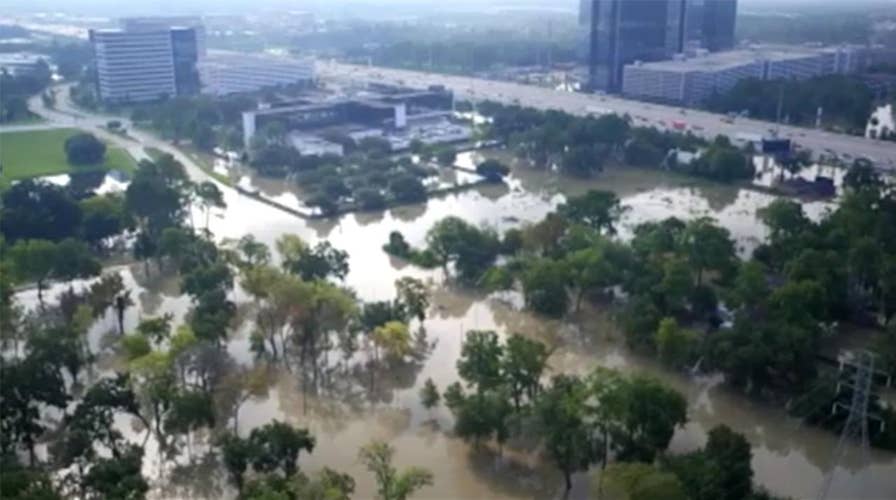Drone fleets flock to assist in hurricane disaster recovery
Hurricane Harvey aftermath embracing the use of drones
Hurricane season is taking its toll on the southern U.S. and the commercial drone industry is becoming a major player in disaster relief efforts.
In the wake of Hurricane Harvey and now Hurricane Irma, the FAA issued permits to commercial drone operators to assist in a number of different functions that expedited the recovery process.
One of the crucial ways drones are helpful is in getting the electrical grid up and running again in areas crews cannot access, either because the surrounding spaces are flooded or power lines are down.
HURRICANE IRMA: STUNNING VIDEO SHOWS INTERNATIONAL SPACE STATION PASS OVER THE STORM
“We were down there [Houston] doing energy restoration work for about eight days and what we were doing is we were going out to areas that folks couldn’t get to where we could easily fly a drone. We had worked with the FAA for permissions, we were flying on emergency certificates of authorization. We’d fly out over areas working with folks in the energy industry to make assessments and then help primarily concentrating on safety”, said James Fleitz, co-founder of drone services company Avisight.
Hurricane Harvey is projected to become the costliest natural disaster in the U.S. Financial analysts have estimated $160 billion dollars in damages, exceeding that of Hurricane Katrina in 2005.
Drones are being used to assess a lot of that damage, especially by insurance companies. Allstate and Farmers Insurance are using their own company drones to make damage assessments. It speeds up the process so insurance companies can pay claims to customers much faster than they normally would with multiple person crews scoping out the extent of losses.
HURRICANE IRMA: AIRCRAFT CAPTURE STUNNING SHOTS OF MOON SHINING IN THE EYE OF THE STORM
“Is it a two billion dollar catastrophe or a ten billion dollar catastrophe, a lot of times that’s not known very quickly, this is a technology that can help to make that process go a lot faster and also help to respond to their main customers quickly too and get them their money," said Peter Fuchs, co-founder of drone manufacturer Ascent Aerosystems.
While helpful in certain aspects, drones can’t assist in traditional helicopter efforts. Drone operators are cautious not to interfere with normal search and rescue operations, but experts say integration is key to being successful, which means that everyone on the ground has to be on the same page.
"It’s not just about capturing a lot of data, it’s about capturing the critical data and getting it to the right people at the right time,”said Ed Hine, vice president of business development at Hazon Solutions, which oversaw a fleet of drones assisting in Houston. Hine added drones can survey areas as far as three miles wide in a matter of 15 minutes, a process that would take hours on foot.
HURRICANE ESSENTIALS: 12 MUST-HAVE ITEMS TO HELP YOU SURVIVE THE STORM
But critics are still skeptical on the efficiency of drone flights in disaster areas. Drones are limited in what they can do to help people during a storm. Drones cannot carry people to safety, obviously, but other smaller capabilities are possible like delivering supplies in impassable areas or spotting stranded victims that need rescuing.
Fleitz thinks drones will become a major player in future weather events. He says, “It’ll take its spot in the normal phase of aerial support. Do you have assets that fly out into the eye of the hurricane today that are manned? Absolutely. Will that be done someday with larger drones and those kind of things? Absolutely.”





















